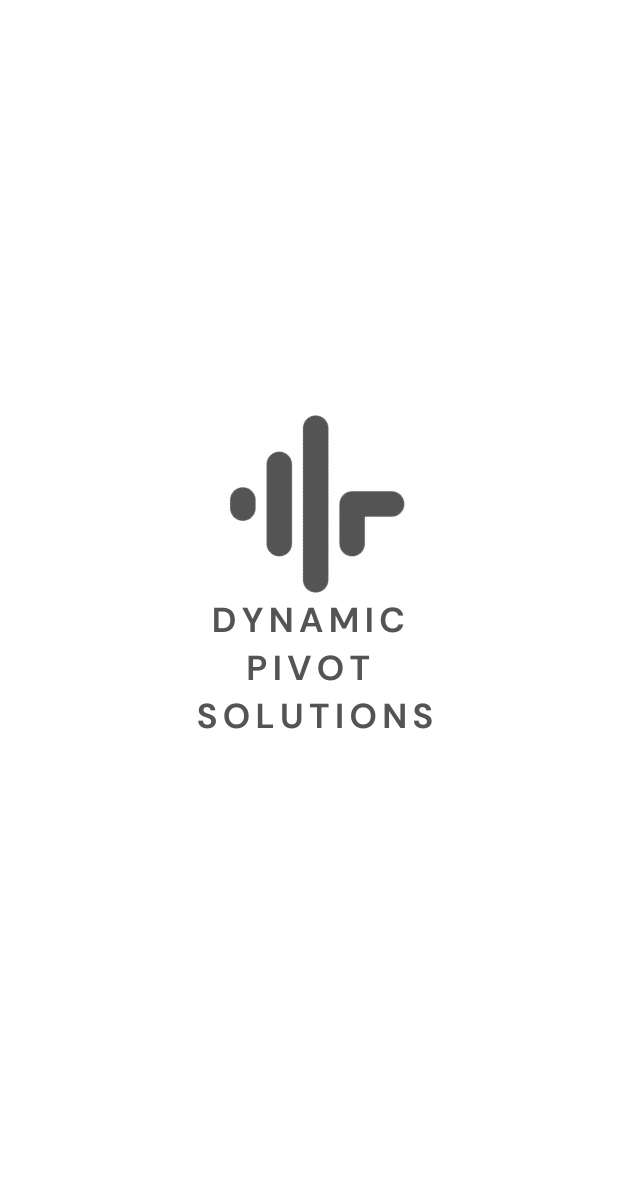By Leonardo Villalobos
•
September 6, 2025
Artificial Intelligence (AI) is no longer a futuristic concept—it is today’s most powerful business tool. Companies across industries are looking for ways to automate processes, streamline workflows, and reduce costs without compromising quality. At the center of this transformation stands Dynamic Pivot Solutions, a company redefining how businesses leverage AI to create operational efficiencies, cut human labor expenses, and minimize costly errors. From enterprise-level automations to AI-powered analytics and decision-making, Dynamic Pivot Solutions integrates advanced technology with human-centered design. The result? Businesses that are leaner, smarter, and better prepared to thrive in a competitive global market. The Challenges of Traditional Operations Before exploring how AI can reshape industries, it’s important to acknowledge the challenges companies face today: Rising Labor Costs Payroll often represents the largest expense for organizations. The cost of hiring, training, and retaining staff continues to climb, particularly in industries with repetitive or manual workflows. Human Error Even the most talented employees make mistakes. Inaccuracies in data entry, miscommunications, and overlooked details can lead to financial loss, reputational damage, and operational inefficiencies. Scalability Issues Traditional processes often rely heavily on people. As a business grows, scaling becomes complicated, requiring additional staff, training, and infrastructure. Inefficient Workflows Many companies still rely on outdated systems that cannot keep up with the demand for real-time insights or agile decision-making. Dynamic Pivot Solutions was founded to tackle these challenges head-on by leveraging the power of AI. How Dynamic Pivot Solutions is Leading the AI Revolution 1. Automating Repetitive Tasks AI shines brightest when handling repetitive, rule-based activities. Dynamic Pivot Solutions designs custom automation frameworks that reduce dependency on human labor for tasks such as: Data entry and validation Customer support queries via chatbots Invoice processing and payment reconciliations Inventory tracking and order management These automations don’t just save time—they allow businesses to redirect human talent toward higher-value, creative, and strategic tasks. 2. Minimizing Human Error Mistakes in manual workflows can cost companies millions. Through machine learning models and predictive analytics, Dynamic Pivot Solutions provides systems that: Flag inconsistencies in financial transactions Detect anomalies in production and supply chain data Verify compliance and regulatory reporting automatically Enhance quality control in manufacturing and logistics By creating self-correcting systems, the company ensures accuracy becomes the standard, not the exception. 3. Cutting Human Labor Costs Without Sacrificing Quality One of the most compelling reasons companies turn to Dynamic Pivot Solutions is cost reduction. With AI handling routine and repetitive work, businesses can operate with leaner teams while still maintaining—or even improving—service quality. This doesn’t mean replacing people entirely; rather, it means reallocating resources so that human employees focus on creativity, problem-solving, and relationship-building while AI manages the heavy lifting. 4. Improving Decision-Making With Real-Time Data AI is not just about automation—it’s also about insight generation. Dynamic Pivot Solutions builds advanced analytics dashboards powered by AI to deliver: Predictive demand forecasting Customer behavior analysis Real-time financial reporting Risk assessments for smarter investments This gives leadership teams the clarity and confidence needed to make proactive decisions, ensuring businesses stay ahead of competitors. 5. Seamless Omni-Channel Integration Today’s businesses operate across multiple platforms—Shopify, Amazon, ERP systems, CRMs, social media, and beyond. Dynamic Pivot Solutions specializes in omni-channel AI integration that allows all systems to communicate in real time. This creates: A unified source of truth for data Automated cross-platform order fulfillment Integrated customer insights across channels Streamlined marketing and advertising campaigns The result is reduced duplication, better data accuracy, and a holistic view of business performance. Industry Applications: Where AI Delivers the Greatest Value Dynamic Pivot Solutions works across industries, tailoring AI solutions to each client’s unique needs. E-Commerce & Retail Automated product listing and inventory updates AI-powered dynamic pricing strategies Personalized customer recommendations Fraud detection in online transactions Finance & Accounting Automated invoice processing Predictive cash flow analytics Compliance and audit automation AI-driven credit risk assessments Healthcare Patient scheduling automation AI-powered diagnostics support Error reduction in billing and insurance claims Predictive analytics for patient outcomes Logistics & Supply Chain Smart route optimization for deliveries Real-time inventory monitoring Predictive demand forecasting Automated customs and compliance documentation Marketing & Advertising AI-driven content personalization Automated campaign reporting Predictive customer behavior insights Chatbots for lead qualification and nurturing The ROI of AI With Dynamic Pivot Solutions Businesses often ask: What’s the real return on investment (ROI) of implementing AI? Dynamic Pivot Solutions provides measurable outcomes: Cost Savings Reduction in payroll expenses due to task automation Decreased financial losses from human error Efficiency Gains Faster processing times for routine tasks Increased productivity per employee Revenue Growth Smarter decision-making based on predictive analytics Enhanced customer engagement and retention Scalability Ability to grow operations without adding proportional labor costs Standardized systems that support expansion The Human + AI Partnership Dynamic Pivot Solutions recognizes that AI works best in partnership with people. Rather than framing AI as a replacement for human talent, the company emphasizes augmentation: AI Handles the Repetition Data entry, reconciliations, monitoring, and reporting. Humans Handle the Strategy Innovation, customer relationships, creative problem-solving. This synergy creates the perfect balance between efficiency and ingenuity. SEO Keywords to Support Ranking To ensure visibility, the blog naturally integrates these target keywords and phrases: AI automation solutions Reducing labor costs with AI Preventing human error with AI Business efficiency through AI Dynamic Pivot Solutions AI integration Omni-channel eCommerce automation AI-powered decision making Future of AI in business: The Future of AI and Dynamic Pivot Solutions The future of AI is not just about replacing jobs; it’s about reshaping work. As more businesses embrace digital transformation, those who partner with forward-thinking firms like Dynamic Pivot Solutions will gain a competitive edge. Emerging areas Dynamic Pivot Solutions is already exploring include: Generative AI for content creation in marketing and advertising AI-powered cybersecurity frameworks to protect sensitive business data Predictive workforce planning to help HR allocate resources more effectively Sustainability analytics to help companies meet ESG goals By staying ahead of trends, Dynamic Pivot Solutions ensures clients are always operating at the cutting edge. Conclusion: Why Choose Dynamic Pivot Solutions? The modern business landscape demands speed, accuracy, and cost efficiency. Traditional methods can no longer keep up. That’s why companies turn to Dynamic Pivot Solutions—a partner that not only implements AI but reimagines how businesses can operate smarter, leaner, and more effectively. By combining automation, analytics, and human ingenuity, Dynamic Pivot Solutions is leading a revolution where AI eliminates inefficiencies, reduces labor costs, and minimizes human error—ultimately paving the way for sustainable growth and long-term success.









